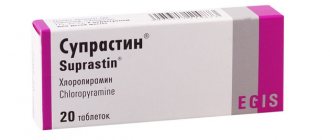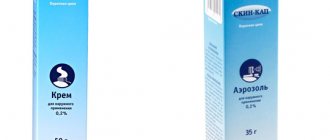Causes of candidal dermatitis
Candida inflammation of the skin occurs when conditions are created for the active growth of these fungi:
- Warm and humid weather,
- Tight clothes,
- Insufficient personal hygiene,
- Rare change of underwear,
- Skin injuries
- Obesity, in which a large number of skin folds are formed, where the environment is favorable for candidal infection,
- Antibiotics that destroy beneficial bacteria on the surface of the skin, inhibit the division of fungi,
- Treatment with glucocorticoids or other drugs that affect the immune system,
- Diabetes mellitus, in which, in addition to reduced immunity, the fact that skin secretions contain a large amount of glucose also plays a role. This is a breeding ground for fungi. In case of candidal dermatitis, the doctor will definitely prescribe a blood test for glucose, so often this condition accompanies diabetes,
- Pregnancy, which changes the balance in the immune system and may impair glucose tolerance
- Diseases that reduce the immune response
- Moist skin, especially in skin folds. For example, when a person does not dry himself well enough after a shower and puts on shoes on wet feet.
Candida fungi grow and thrive in moist, warm environments. This is why this condition usually affects the skin fold area. Candidiasis is not a contagious disease. However, to people with a weakened immune system, it can be transmitted by touching the affected area of another person's skin.
Factors that increase the likelihood of developing candidiasis in children
- prematurity
- long-term use of antibacterial drugs
- intestinal infections
- diabetes
- violation of the child's feeding schedule
- allergies
- dysbacteriosis
- acute infectious diseases
- enterocolitis (inflammatory bowel disease)
- multiple caries
- poor oral hygiene
- mucosal injury
- excessive carbohydrate intake
Children can become infected during childbirth from the mother, also through hands, nipples and other objects. Children's immune system is immature, the mucous membranes are thinner - all this can contribute to the development of candidiasis.
Symptoms of candidal dermatitis
Symptoms usually vary depending on the area affected, but candidiasis often includes the following:
- Unbearable itching
- Pink or purple-tinged spots in the affected area,
- Discharge from the affected area that appears as a white, patchy, curd-like coating that comes off easily,
- Peeling and flaking of flakes of dead epithelium,
- Skin irritation and sensitivity,
- Persistent redness
- Maceration is a change that occurs to the skin from prolonged exposure to liquid. The epithelium becomes saturated, swells and becomes loose, light and soft in appearance,
- Around the affected area, pustules and pimples are formed, filled with cheesy purulent discharge,
- Cracks in the epithelium, especially pronounced if the areas between the fingers are affected,
- In rare cases, deep subcutaneous ulcers develop, from which a fungal culture is cultured.
Candidal dermatitis is often accompanied by the spread of infection to the mucous membranes. It is characterized by the appearance of painful jams in the corners of the mouth, which are very difficult to cure. The mucous membranes of the mouth and tongue may be affected, on which a white, cheesy coating forms.
Inflammation of the nail bed is also often caused by these microorganisms. Typically, the microflora combines fungi and bacteria. This is a chronic infection in which the area around the nail becomes swollen, red and painful, the color of the nail changes, and the nail may become deformed and peel off. As a result of chronic paronychia caused by Candida, the nails take on strange shapes and can change color, as well as become dystrophic, thinner or, conversely, thicken. Conditions predisposing to candidiasis paronychia include an excess of adrenal hormones and Raynaud's syndrome, a disease manifested by impaired blood flow in the fingers.
There are also several rare forms of candidal dermatitis, which occur in adults and children and are usually severe and less treatable than ordinary candidiasis.
- Common cutaneous candidiasis is a disease in which, spreading from one focus, fungal inflammation covers large areas of the skin, perineum, arms and legs, including hands and feet, as well as the entire surface of the body.
- Candidal granulomas are large, dry, wart-like rashes that form in chronic dermatitis. When examined under a microscope, Candida fungi are found in keratinized epithelial cells.
- Disseminated candidiasis is a condition in which an infection located inside the body, when it weakens, spreads to the skin, forming candidal dermatitis. Candida spreads hematogenously, that is, through the blood to the skin.
To confirm the diagnosis, the doctor conducts an examination, takes a smear from the site of the lesion, which is treated with potassium hydroxide, stained and examined under a microscope - Candida yeast fungi will be visible in it.
Prevention of candidiasis in children
General treatment:
- Antifungal drugs by mouth Antifungal drugs by mouth (Important! Prescribed only by a doctor!)
- Reducing the consumption of carbohydrates, it is necessary to completely eliminate sweets, it is recommended to consume fermented milk products
- Probiotics to normalize microflora
- Vitamins B, C
- Treatment of chronic diseases, including caries
Local treatment:
- Antifungal ointments, drops
- Antiseptics with antifungal activity are used after each feeding
- Painkillers – gels, solutions, sprays
Candidal dermatitis in a child
Candidal dermatitis occurs in childhood, is especially common in infants, has a characteristic localization (see photo), and when it appears, immediate treatment is required. At an early age, candidal dermatitis affects the inguinal folds and the area between the buttocks, especially when using reusable diapers and when the child rarely changes them, constant humidity and heat in this area are the causes of fungal growth and inflammation (as shown in the photo), and treatment is carried out first It’s all about following the rules of hygiene.
In addition to the complication of diaper dermatitis, this fungus often affects the tongue, cheeks, and can spread to the esophagus. A cheesy white coating forms against the background of reddened mucous membrane, which is easily removed with a spatula. Erosions and ulcers may form. This inflammation can be very painful. This leads to a disruption in general well-being, the baby has difficulty swallowing, he worries, cries, loses appetite and sleeps poorly.
Also, children sometimes experience sinusitis caused by candidiasis. Lesions of the external auditory canal with the release of a cheesy discharge from the ear are also common.
In rare cases, congenital candidiasis occurs - this condition is accompanied by a rash throughout the body, enlarged liver, sepsis, and respiratory distress.
Symptoms in infants include:
- Severe and persistent diaper dermatitis,
- Skin rash that resembles eczema
- White or yellow spots on the tongue or the inside of the mouth and cheeks,
- Colic and abdominal pain for longer than one month,
- Recurrent ear infections
- Symptoms are worse in wet weather.
In older children, signs of chronic candidal infection include:
- Constant craving for sweets
- School skills disorders
- Frequent irritability and bad mood,
- Frequent ear diseases
- High indoor humidity or humid weather worsens the condition.
Symptoms of yeast in children's stool
Yeast as a cause of problems with bowel movements.
Even before receiving the results of the tests, it is possible to find out that yeast fungus has begun to actively develop in the body, which will indicate improper functioning of the intestines.
In order to contact the laboratory for testing, the reasons will be:
- Pain in the abdominal area;
- Reluctance to eat;
- Problem with bowel movements, presence of discharge;
- Pain when going to the toilet;
- Flatulence;
- Constant regurgitation in babies.
However, there is no need to panic right away, because if the test results do not reveal any abnormalities, and the child’s appetite is normal, then there is no need to use various treatment options. When the test results indicate that the norm for this type of fungus in the body is exceeded, you should urgently consult a doctor and begin appropriate treatment.
Adults should remember that taking an antibiotic provokes the proliferation of these microorganisms. However, this nuance cannot be considered the exclusive reason for the activation of the process of bacterial reproduction.
Candidal dermatitis in an adult
Candidal dermatitis in adults, unlike children, develops more often in the armpits, inguinal folds, under the mammary glands, less often between the fingers and in the folds of the skin in obesity (as shown in the photo), and in this case, treatment also consists of eliminating provoking factors and the use of antifungal drugs.
In bedridden patients, dermatitis caused by these fungi develops on the back.
Cases have been described in which candidiasis developed under the ring on the finger in patients with reduced immune system function.
In young mothers who are breastfeeding, an inflamed nipple with very severe soreness can also be caused by candidiasis. This makes feeding the baby much more difficult. The infection is most often transmitted from the baby's mouth, especially if he has candidiasis of the oral mucosa. Some researchers believe that cutaneous candidiasis is the main cause of nipple pain associated with breastfeeding.
Yeast in baby's stool
Yeast in a baby's stool negatively affects the digestive system.
The organs that are involved in the digestion of food in a child are most vulnerable to various bacteria. Such bacteria pose the greatest danger to infants.
Yeast fungus of the Candida species negatively affects the formation of their digestive system and affects the mucous membrane of internal organs.
As a result, the child does not want to eat, refuses milk, and sleeps poorly. Yeast-like fungus can disrupt the growth process in children, slow down their physical development, and also affect mental development.
In young children, intestinal candidiasis occurs against the background of dysbacteriosis, while they are constantly tormented by pain, and thickening of the walls in the anal area is observed. Often this disease leads to the development of candidiasis on the arms, legs and other surfaces of the body.
If parents have the first suspicions about the presence of a disease, it is necessary to immediately begin an examination, since timely detection of the disease will help to quickly cure it.
Treatment of candidal dermatitis
Treatment for candida skin infections is usually quite simple. If the immune system works well and the infection does not spread to internal organs, hospitalization is not required. The doctor will usually prescribe a drying agent along with antifungal creams, ointments, or lotions to apply to the affected skin. Sometimes medications in tablets are needed.
Treatment of candidal dermatitis with medications
- The topical antifungals most often prescribed to treat candidal dermatitis are ketoconazole or clotrimazole. They are used topically and have very few side effects.
- Fluconazole is an oral tablet that is used when topical treatments are ineffective. It is quite safe, there are few adverse reactions to it, and sometimes one dose is enough to fight the infection.
- Nystatin and amphotericin B are more powerful drugs that are used intravenously for a common infection in a hospital setting.
Most medications are used twice daily. Some medications (such as miconazole and clotrimazole) are safe in the first trimester of pregnancy.
Side effects include:
- Itching at the application site,
- Redness and burning sensation in the area of application,
- Headache,
- Upset stomach and indigestion,
- Skin rash.
Intravenous antifungals cause more severe effects:
- Loss of appetite,
- General weakness
- Stool disorder
- Pain in muscles and joints,
- Various types of rashes.
In rare cases, these drugs cause dangerous allergic reactions or severe skin damage with the death of the epithelium and the formation of blisters like a burn.
Patients with liver disease should not use antifungal agents without medical supervision. They cause liver damage and, if used uncontrolled, can lead to liver failure.
Medicines that, when used simultaneously, can react with antifungals and change their activity:
- Rifampin, an antibiotic
- Benzodiazepines, which are prescribed to improve sleep and reduce anxiety,
- Estrogens and progesterones, which are contained in oral contraceptives and hormone replacement therapy,
- Phenytoin, which is sometimes prescribed for epilepsy.
- Among drying agents, the most effective and inexpensive is zinc oxide, which has virtually no contraindications or adverse effects. This remedy can even be used in infants with diaper dermatitis caused by fungi.
- Fukortsin is another drug that has a drying, anti-inflammatory and antiseptic effect. This is an aqueous solution of fuchsin, it has a bright pink color, it is recommended for use in acute cases of the disease. It is not advisable to use it in children due to some toxicity.
- A weak solution of apple cider vinegar may be useful as an additional remedy for acute dermatitis in adults.
- Benzoyl peroxide has shown effectiveness in subacute cutaneous candidiasis.
- It is also recommended to cover the affected area with bandages as little as possible, try to keep it open, and ensure that there is no weeping or rubbing of the skin.
Forms of candidiasis in children
It is important to understand that candidiasis most often affects young children who cannot report a burning sensation or a change in taste, so special attention should be paid to changes in the child’s condition and consult a doctor in time. Symptoms depend on the form of the disease. More often in children, candidiasis is observed in the form of acute pseudomemranous stomatitis.
Mild form of candidiasis
Only one area is affected (for example, only the tongue or only the cheeks). Under the white coating there is a bright red mucous membrane without damage. The child's general condition does not suffer.
Moderate form of candidiasis
Various areas of the mouth are affected (eg, lips, cheeks, and tongue). The plaque is difficult to remove, and underneath there is damaged and even bleeding mucosa. Sometimes the lymph nodes are enlarged.
Severe form of candidiasis
The plaque is gray in color and covers not only the oral cavity, but also the tonsils and the back wall of the pharynx. The mucous membrane is dry, the plaque is almost impossible to remove, the lymph nodes are enlarged, the temperature rises, the child is weak and refuses to eat. This form may be accompanied by damage to the skin and genitals. Frequent relapses are characteristic.
Atrophic form of candidiasis
First, peeling of the epithelium occurs, then plaque films form, and the lesion looks like spots with a smooth surface. If the tongue is affected, then its papillae are smoothed out, and it becomes as if varnished, its movements are difficult, sensitivity and burning appear when eating.
Acute pseudomembranous candidiasis
The most common form of candidiasis, with this form a white coating is formed, which is often easily removed, exposing the bright red mucosa.
Erosive-ulcerative form of candidiasis
The mucous membrane is swollen, red, and after removing the plaque, erosions are found.
Hypertrophic candidiasis
Plaque forms in the form of plaques, is difficult to remove, saliva is viscous and foamy. When the tongue is affected, the papillae of the tongue become enlarged and turn black; this disease is called black hairy tongue.
Chronic candidiasis
The symptoms are not pronounced, it manifests itself from time to time with dryness, redness and plaque. If the tongue is affected, a burning sensation appears and swallowing is difficult. In children, chronic forms are rare and more often occur due to improper or incomplete treatment of acute candidiasis.
Prevention of candidal dermatitis
Tips to help prevent candida dermatitis include the following:
- Wear clothing made from athletic material that wicks moisture away from the body and helps keep skin dry.
- Keep your armpits, groin folds and other parts of the body that are prone to candida infections dry.
- Always shower and dry thoroughly after exercise or if you become sweaty.
- If you are overweight or obese, always keep your skin folds dry, wipe them often, use powder,
- In warm weather, it is preferable to wear open shoes rather than sneakers.
- Change your socks and underwear regularly
- If you have diabetes, it is important to control your blood sugar levels very closely. Hyperglycemia, in addition to other complications, leads to cutaneous candidiasis,
- Losing weight and maintaining optimal body weight is an important measure in the prevention of candidiasis. A person with normal nutrition has a reduced number of skin folds and areas of friction between skin areas. These people are also less likely to develop diabetes, an important underlying condition for thrush.
DIAPER DERMATITIS
The issues of caring for the skin of a child in the first years of life remain relevant to this day. Due to the anatomical and physiological characteristics of children (thin and sensitive surface layer of the epidermis, well-developed capillary network, lack of local immunity), the protective function of the skin, protecting against adverse external influences, is significantly reduced in them. At the same time, the resorption and respiratory functions of the skin are increased.
The influence of various damaging factors, improper use of care products: creams, powders, soaps, as well as diapers - all this can lead to disruption of the normal condition of the skin [1, 4].
One of the most common skin changes is diaper dermatitis, the incidence of which ranges from 35 to 50% [3]. It is observed more often in girls. Children with increased sensitivity to allergens are more predisposed to diaper dermatitis, which is explained by the development of exudative phenomena and dyspepsia. Breastfed children are less likely to suffer from diaper dermatitis, since their feces have low enzymatic activity.
The first attempt to establish the etiological factor of diaper dermatitis was made by Zahorsky in 1915. Studying case histories, he drew attention to the frequent combination of two factors - “ammonia diapers” and diaper dermatitis. This led to the conclusion that ammonia may cause skin irritation. In the early 80s. Over the past century, a number of studies have been conducted to identify the etiology of diaper dermatitis. Currently, diaper dermatitis is defined as a periodically manifested pathological process that occurs due to the effects on the child’s skin of mechanical (diaper fabric), physical (humidity and temperature), chemical (ammonia, digestive enzymes, bile salts), microbial factors that do not only irritating, but also toxic to the child’s highly sensitive skin.
Research has shown that diaper dermatitis is a complex cyclic process involving three stages [2].
The first stage is initially damaged skin. The development cycle of diaper dermatitis begins from the moment when the protective function of the stratum corneum of the epidermis of healthy skin decreases. This can happen for a number of reasons.
- High humidity. Urine wets the skin. Wet skin is easily damaged by friction, which in turn allows irritants to penetrate.
- Action of fecal enzymes. Protease and lipase, which are normally present in children's feces, have an irritating effect on the skin, increasing its permeability.
- Interaction of urine and feces. Urease, produced by fecal bacteria, reacts with urea in urine, releasing ammonia. Ammonia increases the pH of the environment, resulting in increased activity of the main irritating factors (protease and fecal lipase) and increased skin permeability.
These factors lead to damage to the skin.
The second stage is diaper dermatitis. The factors listed below, acting individually and in combination with each other, cause diaper dermatitis.
- Mechanical irritation. Rubbing skin against each other or against the diaper can cause chafing.
- Chemical and biological irritation. Fecal protease and lipase, ammonia and bile salts may increase skin irritation.
- Infectious agents. Microorganisms found in feces, especially Candida albicans, can infect weakened skin. The most prolonged and severe diaper dermatitis is caused by exposure to microorganisms.
The third stage is recovery (normalization of the condition of the skin). Having gone through its development cycle, uncomplicated diaper dermatitis is eliminated in two to three days, and patient care is of no small importance.
Depending on the severity, there are 3 successively developing stages of diaper dermatitis (criteria F. Germozo, 1984). A mild degree is manifested by redness, a mild papular rash and peeling of the epidermis in the genital area, buttocks, lower abdomen and lower back. The average degree develops if the impact of irritating factors is not eliminated. Papules, pustules, erosions appear on the skin, infiltrates can form in the skin folds, and infection with bacteria and Candida albicans is possible. With a prolonged course of the disease (severe degree), extensive infiltrates, papules, blisters, oozing, deep erosions, and ulcerations are formed. The affected area increases.
The main goal of skin care for a young child is to prevent irritation and damage to the epidermis. This is achieved by cleansing the skin, protecting it from adverse effects, in particular contact with secretions.
The delicate and sensitive skin of a child requires gentle but regular and thorough cleansing, especially in the anus and genital area. To do this, use gentle detergents. The skin has a lower threshold for irritability, so these products should not be used in excess. It is believed that soap can irritate the skin due to alkaline components, and synthetic detergents (bath bubbles, shampoos) due to the degreasing effect they produce. You should bathe your child using detergents no more than 2-3 times a week, while washing should be done regularly, and after bowel movements, it is mandatory. Dry the skin using towels or diapers made of soft cotton fabric using blotting movements.
In addition to cleansing, the skin must be powdered or lubricated with creams and oils. Moderate powdering of the skin protects it from diaper chafing, while excessive powdering, especially after bathing if the skin is not wiped dry, leads to crusting and crumbs. Some children do not tolerate rubbing emollients into the skin well, since this manipulation can be accompanied by delayed sweating and maceration. Excessive use of oils impedes the respiratory function of the skin. Thus, cosmetic skin care products must be selected individually for each child, using domestic and foreign products, moisturizing oil, baby cosmetic milk, toilet soap, baby powder, etc.).
To prevent skin contact with secretions (urine and feces), it is advisable to use modern disposable diapers, the inner cellulose layer of which contains a gel-forming material with high moisture absorption capacity.
When the first clinical symptoms of diaper dermatitis appear, it is recommended to stop using cloth diapers and oilcloths and switch to disposable diapers, which must be changed every 3-4 hours, even at night. The advantage of these diapers is that urine is absorbed and retained in the inner layer, without the baby's skin coming into contact with the moisture. In addition, feces do not mix with urine; the stool is contained by the diaper. This eliminates one of the main pathogenetic mechanisms for the development of diaper dermatitis. In addition, the child should not be dressed too warmly; tight-fitting clothing should also not be used.
For diaper dermatitis, the use of creams and ointments is recommended to treat the affected areas of the skin. Desitin ointment containing zinc oxide has a tightening effect, resulting in a decrease in the flow of mucus and other secretions to the affected areas of the skin. In addition, a protective barrier is created against irritating factors.
The components of the cream "Drapolen" - benzalkonium chloride and citrimide - have a local antiseptic and disinfectant effect. White soft paraffin, anhydrous lanolin and cetyl alcohol included in the cream have a softening, protective and hydrating effect.
Ointments "d-Panthenol" and "Bepanten", containing dexapanthenol, stimulate epithelization of the skin, and in addition, have an anti-inflammatory effect.
The drug used should be applied daily in a thin layer to the affected areas of the baby's skin during swaddling until the symptoms of diaper dermatitis disappear.
Research conducted at the Clinic of Children's Diseases of the MMA named after. I.M. Sechenov, showed that Drapolen cream is advisable to use for the treatment of mild forms of diaper dermatitis, as well as for the purpose of preventing its development. D-Panthenol ointment is effective in the treatment of mild to moderate diaper dermatitis.
Treatment of infection caused by Candida albicans is carried out by eliminating candidiasis of the oral cavity and intestines (Diflucan is used once a day at a rate of 2-5 mg/kg for 5-7 days). Creams or powders with antifungal drugs (miconazole, clotrimazole, ketoconazole, batrafen) are applied topically. If itching is present, antihistamines are used.
Literature
- Yatsyk G.V., Stepanov A.A. Use of d-Panthenol ointment in children of the first year of life // Issues of modern pediatrics. - 2002. - T. 1. - No. 2. — P. 90-92.
- Berg RW Etiologic factors in diaper dermatitis: A model for development of improved diapers. Pediatrician. 1986. - Vol. 14. - No. 1. — P. 27 — 33.
- Jordan WE, Lawson K., Berg R., Fromxman J. Diaper dermatitis: frequency and severity among a general infant population, Pediatr. Dermatolog. 1986. - Vol. 3. - P. 198 - 207.
- Liou LW, Janniger CK Skin care of the normal newborn. Cutis. 1997. - Vol. 59. - No. 4. - P. 171 - 174.
N. A. Geppe, Doctor of Medical Sciences, Professor N. A. Belousova, Candidate of Medical Sciences MMA named after. I. M. Sechenova, Moscow
How to get rid of candidiasis in a child
To get rid of candidiasis, you need to strengthen your immune system.
Based on the results of the analysis, if the specified bacteria exceed the norm, the doctor will prescribe the necessary medications.
The very first and most important task is to bring the intestinal microflora to a normal state and normalize the functioning of the digestive system. It is also necessary to strengthen the immune system.
In addition, it is necessary to conduct additional research for the presence of various abnormalities that may cause the appearance of this disease. The form of treatment will directly depend on the results identified. Typically, treatment of this disease has the following goals:
- Correct treatment of the disease. Based on the results of the study, medications will be prescribed.
- General strengthening therapy. This type of infection begins to manifest itself when immunity is low and there is an insufficient amount of nutrients in the body.
- Based on this, taking various vitamins is also necessary.
Thematic video will tell you about candidiasis:
https://www.youtube.com/watch?v=2M7sely6ph8









